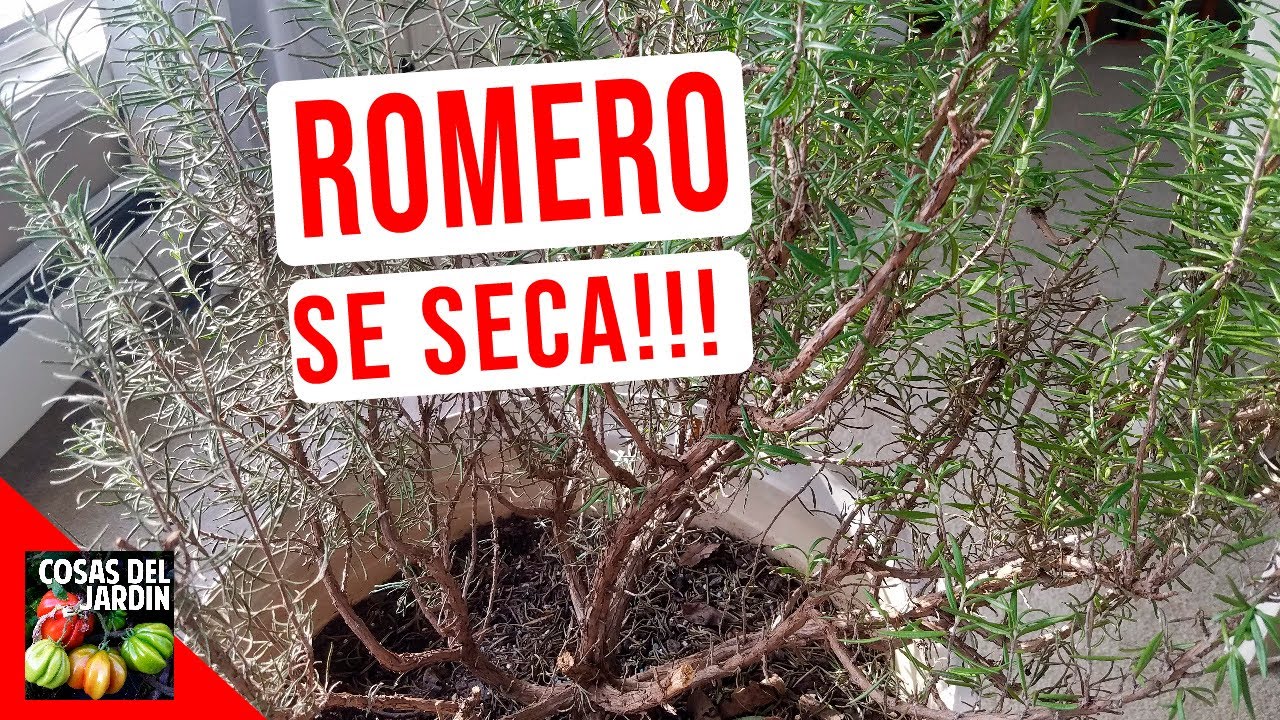Viral
¡Romero a punto de morir! Descubre cómo rescatarlo con estos increíbles consejos

Rosemary plants can be a beautiful addition to any garden or even a potted plant, but they can be a bit tricky to care for. Many gardeners have struggled with keeping rosemary plants from drying out and eventually dying. If you’ve experienced this problem, you’re not alone. In this article, we will discuss some tips and tricks to ensure that your rosemary plant never dries up again.
The Natural Habitat of Rosemary
To understand how to care for rosemary, it’s important to know where it naturally grows and how it thrives. Rosemary evolved on the rocky slopes of the Mediterranean Sea, an environment that doesn’t provide much water. When it rains, the water quickly drains between the stones, and the roots are not accustomed to being constantly wet. In gardens with excessive irrigation or potted plants without proper drainage, the roots of the rosemary suffer and eventually rot, leading to the plant drying out.
Caring for Rosemary in the Garden
If you have rosemary planted in your garden and it’s drying out or growing poorly, it’s likely that you have a drainage problem. To test this, you can dig a 30 by 30 cm hole in the garden where you plan to plant the rosemary. Fill the hole with water and observe how long it takes for the water to drain. If it takes more than 12 hours, you have a drainage issue that needs to be addressed.
To ensure proper drainage for your rosemary in the garden, consider planting it on top of a small hill. If you don’t have a natural hill, you can create a 30 cm mound of soil and plant the rosemary there. If your soil is clayey, avoid adding sand to improve drainage, as this will only create cement-like conditions. Instead, mix the soil with ample amounts of organic matter, such as compost or manure. This organic matter will improve the drainage and overall health of the soil.
In terms of watering, it’s important not to overwater your rosemary. The normal irrigation of the garden should be sufficient for the water to reach the roots of the plant. However, if you have doubts or if there is a drought, you can check if the soil is dry by burying your finger 5 cm into the ground. If the soil is dry, you can water the plant; otherwise, wait for it to dry before watering.
Caring for Rosemary in Pots
If you prefer to grow rosemary in pots, the care process becomes more controllable. Here are some tips for successfully growing rosemary in pots:
- Choose a terracotta pot with a minimum width of 30 cm to allow the rosemary to spread its roots.
- Ensure that the pot has drainage holes. Ideally, these holes should be on the sides of the pot to promote better drainage.
- Use a suitable substrate for pots. Avoid using regular soil or buying pre-packaged soil from the supermarket. Instead, create a mixture of one part peat, one part perlite, and one part earthworm humus or compost. This combination provides the ideal substrate for the rosemary to thrive.
- When it comes to watering, follow the same principles as caring for rosemary in the garden. Wait for the top 5 cm of soil to dry before watering, and never place a saucer under the pot. This can cause the soil to remain constantly moist, which is not ideal for rosemary.
By following these tips, you can ensure that your rosemary plant thrives and never dries out again. Remember to pay attention to the drainage of both garden and potted rosemary plants and adjust your watering accordingly. With proper care and attention, you can enjoy the aromatic flavors of rosemary in your cooking or any other creative use you have in mind.
For more information on caring for rosemary, you can check out our video on how to easily propagate rosemary plants. We also have a video on proper watering techniques for plants, which is equally essential. Don’t forget to subscribe and keep watching our videos for more gardening tips and tricks.
El video original puedes verlo pinchando AQUÍ
